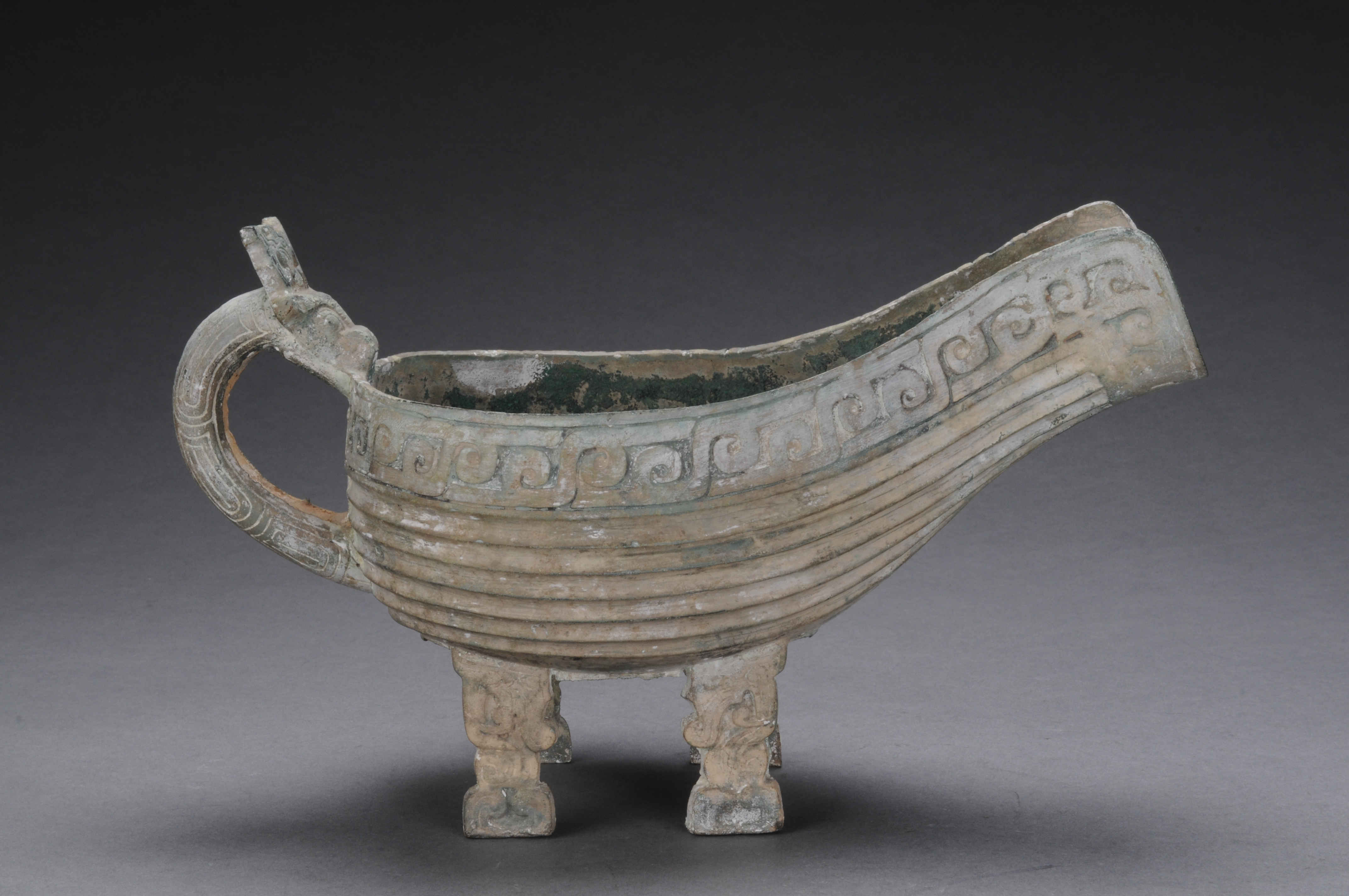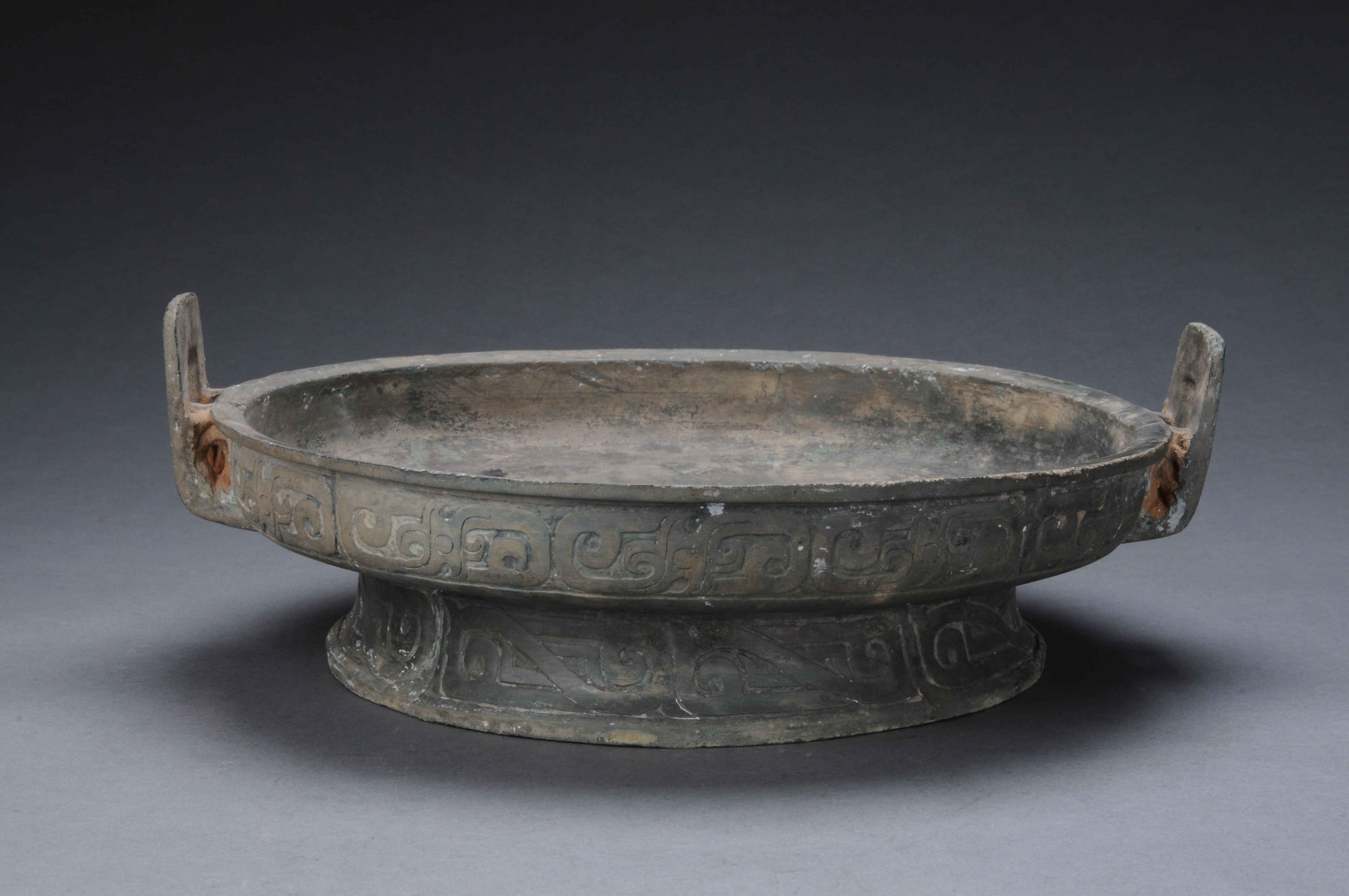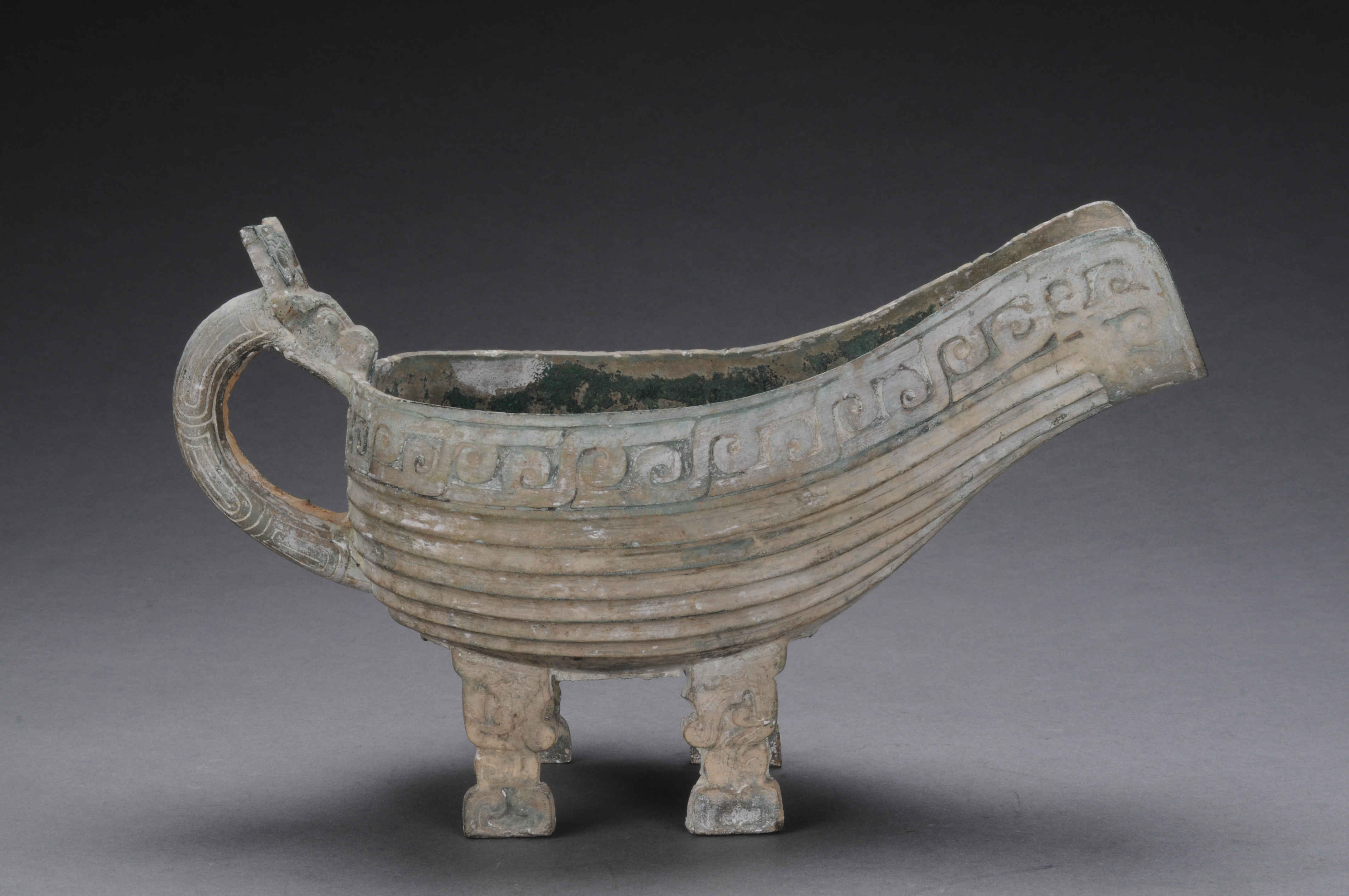

Date: Spring and Autumn Period (770-476 BC)
Provenance: Unearthed from a tomb in Pingqiao, Xinyang, Henan province, 1978
Measurements:
Bronze basin: Diameter: 36 cm; Height: 13.4 cm
Bronze yi ewer: Height: 20cm
This Lady Fan bronze basin has a shallow body with two upright look handles and a flat round base, and bears an inscription on the bottom: "Lady Fan, Long Ying commissioned the basin." The bronze yi ewer has a wide spout, a dragon-shaped handle, a slightly bulging body, and four flat bird-shaped feet. The inscription inside the ewer reads: "Lady Fan, Long Ying commissioned the ewer."
Nobles in the Shang (1600-1046 BC) and Zhou (1046-221 BC) dynasties performed handwashing rituals during sacrifices and banquets. This ritual extended beyond formal occasions, with students using the yi to pour water for teachers, the younger generation using it for the older generation, and hosts using it to serve guests. These elaborate rituals reflect the strict ceremonial system and advocacy for propriety at that time.
Based on the inscriptions inside the artifacts, experts speculate that the owner of the tomb in Pingqiao West, Xinyang, was "Lady Fan, Long Ying", indicating that she, with the family name Ying, was married to the lord of the Fan State and was referred to as "Lady Fan". The historical ties through marriage between the Fan State and the state with the family name of Ying provide valuable material for a deeper understanding of Fan State history.

